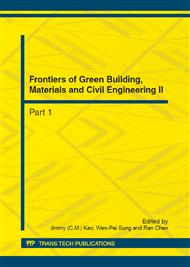p.129
p.133
p.137
p.142
p.146
p.152
p.157
p.161
p.165
Study of Solar Energy Floor Heating System in Cold Climate Zone
Abstract:
Urumqi locates in Xinjiang province, which belongs to cold climate zone in China, the local heating period during the winter up to 6 months. The local solar energy is abundant; up to 130-140 Kcal/cm2·Y that can provides advantage condition for utilization of solar energy. Floor radiant heating system requires lower supply temperature compared with the traditional heating system, which provides an advantage condition for using solar energy as heat source since it is already widely used in Urumqi. Based on these, the study established a solar energy floor heating system in XinJiang University. The system’s components, operating principle and indoor air temperature profile had been introduced in this paper. Through the experimental study the research results shows that 40% time of winter period in cold climate zone, the solar energy floor system can working well without any auxiliary heat source, the heat generate from solar collect system can satisfied the indoor heating requirement. The application of this system can make energy saving and environmental protection become true.
Info:
Periodical:
Pages:
146-151
Citation:
Online since:
August 2012
Authors:
Keywords:
Price:
Сopyright:
© 2012 Trans Tech Publications Ltd. All Rights Reserved
Share:
Citation:



